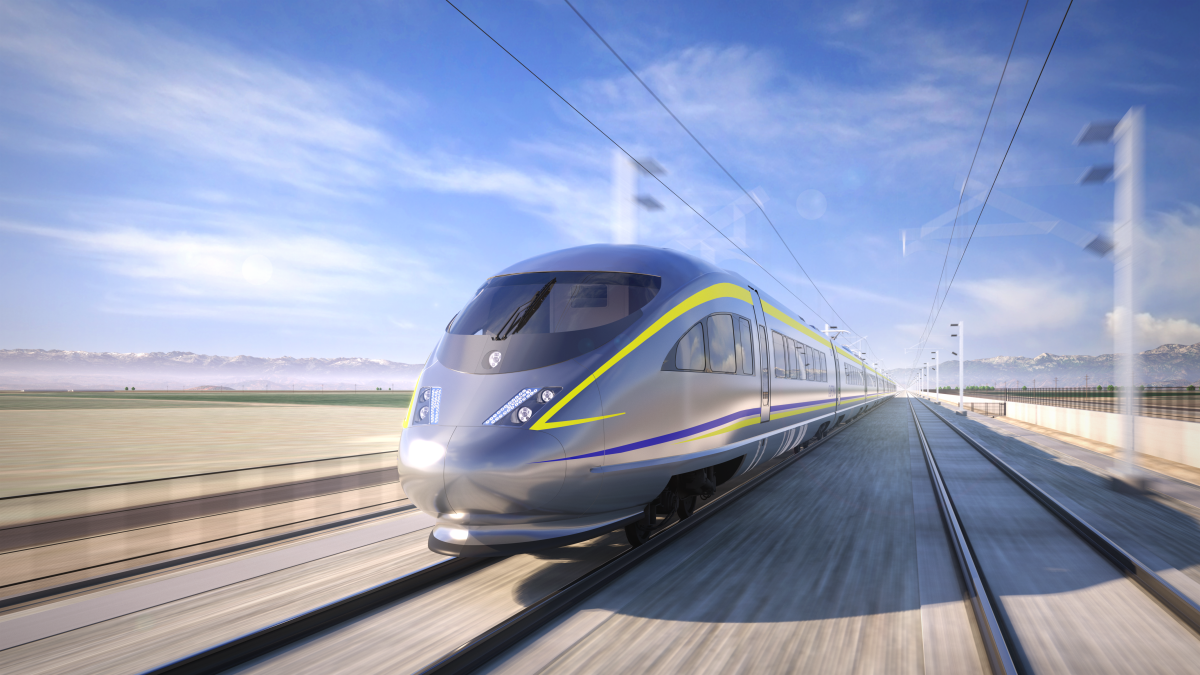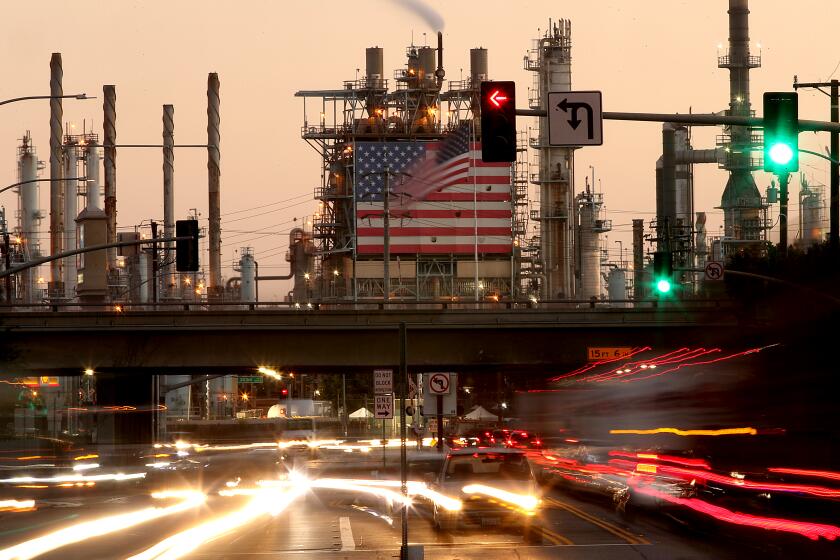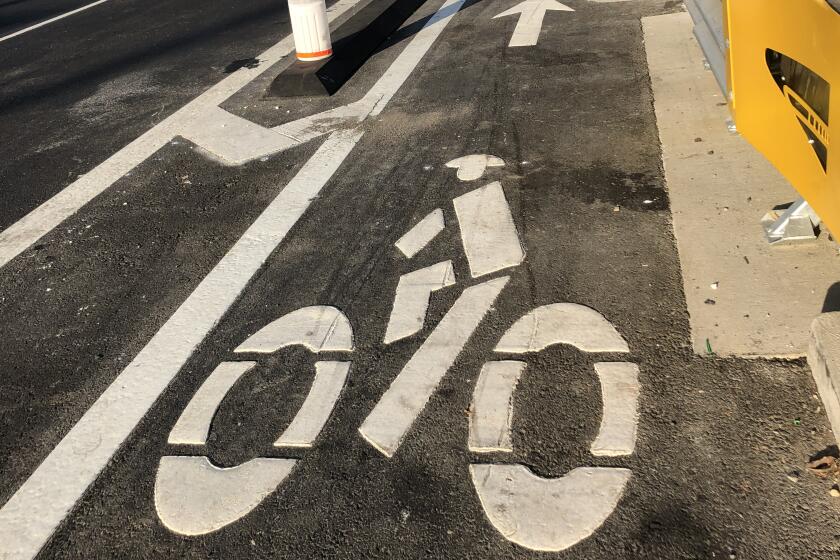Editorial: Funding for California’s bullet trains puts the high-speed rail revolution back on track

- Share via
Finally, the federal government is putting serious money behind a greener and faster transportation system.
This week, the Biden administration announced $6 billion in funding for two high-speed rail projects that will eventually whisk passengers across California and Nevada on electrified trains that can travel 200 mph or faster. It’s a landmark investment in technology that is common in Asian and European countries, but missing in the United States, where the nation’s political leaders have prioritized funding for car and air travel.
The planet is paying the price. The transportation sector is now the nation’s largest source of greenhouse gasses that are fueling global warming and more extreme weather events. Climate change demands visionary, ambitious projects, such as electrified bullet trains, to end our dependence on fossil fuels.
If California wants people to drive less to cut planet-warming emissions, the state should be spending far more money on pedestrian, bike and transit projects.
The nation is going to have to invest in transportation infrastructure anyway. Roads are jammed with cars and trucks, and U.S. airports saw a record number of travelers over Thanksgiving weekend. The biggest challenge is building the high-speed rail lines fast enough to meet the need for alternatives to driving or flying.
The federal funding, which comes from the $1-trillion infrastructure package signed in 2021, will help accelerate two major projects: California’s bullet train through the Central Valley and a high-speed route between Southern California and Las Vegas.
It’s becoming clearer to some environmental leaders that fossil fuel companies have no real plans to change in response to the climate crisis. The only way forward is without them.
Brightline secured $3 billion to build a 218-mile line that will carry passengers between Rancho Cucamonga and Las Vegas in slightly more than two hours. That’s significantly faster than it would be to drive, and it would avoid the soul-crushing traffic along the way. The funding infusion is supposed to get the bullet train operating by 2028, in time for the Olympics in Los Angeles.
Brightline is a private company that sees enormous potential in developing fast trains between large cities. This year, the company launched a higher-speed rail line between Miami and Orlando, Fla., that reaches 125 mph, which isn’t fast enough to be considered high-speed rail.
The Florida route was the first privately operated rail line to begin operations in the U.S. in a century, although, like most major transportation infrastructure projects, it has received public funding. The L.A.-Las Vegas route would also be privately operated. Aside from the $3-billion federal grant, the $12-billion project is expected to be funded through private capital and bonds.
With safe, protected bike lanes and streets designed for humans, not only cars, we can have a future with an environmentally sound commuting option.
California’s High-Speed Rail Authority received $3.1 billion, which is the largest infusion of federal funding to date for the beleaguered project. The money will help complete the 119-mile segment that is under construction between Madera and Shafter in the Central Valley, buy six electric trains and build a train station in downtown Fresno. The authority still needs $8 billion to $10 billion to finish the first segment that will carry passengers between downtown Merced and Bakersfield, but officials with the authority said the Biden administration has indicated this is a priority project that will be eligible for additional funds.
That federal support is essential. California’s bullet train is the nation’s most ambitious high-speed rail project so far, but it has suffered from overly optimistic projections, patchy political support and inconsistent funding. Now that the project is moving forward, it’s important to have federal, state and local governments working together to get it built.
The value is not just the bullet train itself, which will eventually link San Francisco and Los Angeles. The line will become the backbone of the state’s rail system, connecting to commuter lines, such as Metrolink in Southern California, and other high-speed rail lines, including the Brightline route to Las Vegas.
The work of building out a robust high-speed rail network isn’t easy or cheap. Neither were the development of the nation’s interstate highways and its air travel system. High-speed rail is a wise investment for a cleaner, faster, more comfortable traveling future.
More to Read
A cure for the common opinion
Get thought-provoking perspectives with our weekly newsletter.
You may occasionally receive promotional content from the Los Angeles Times.













